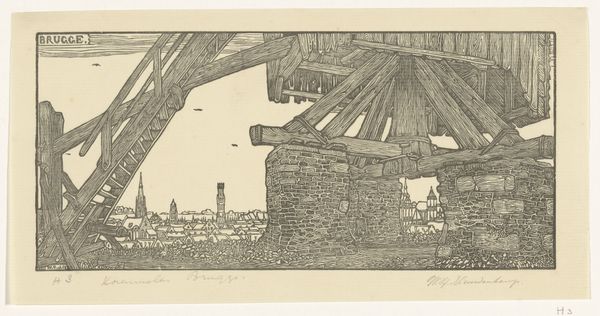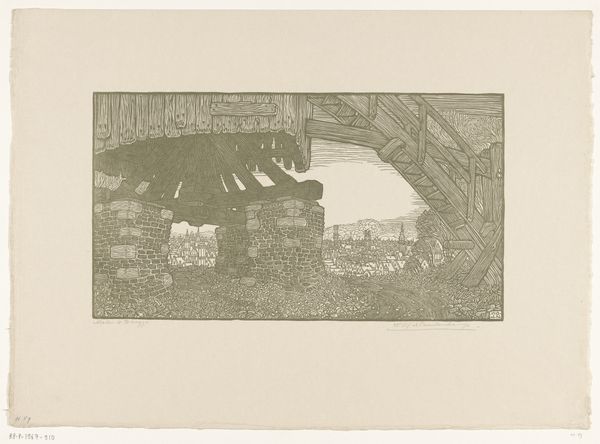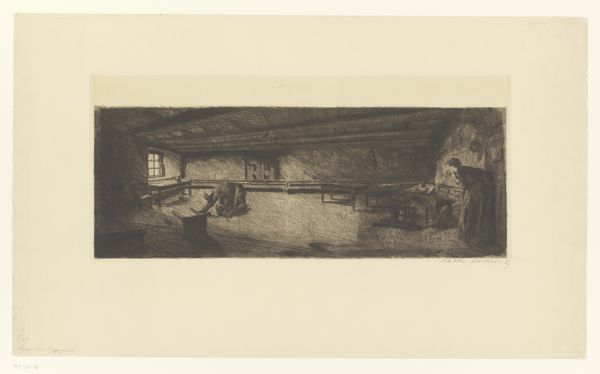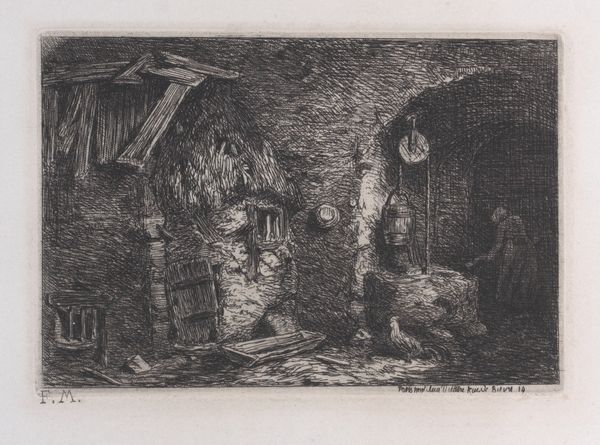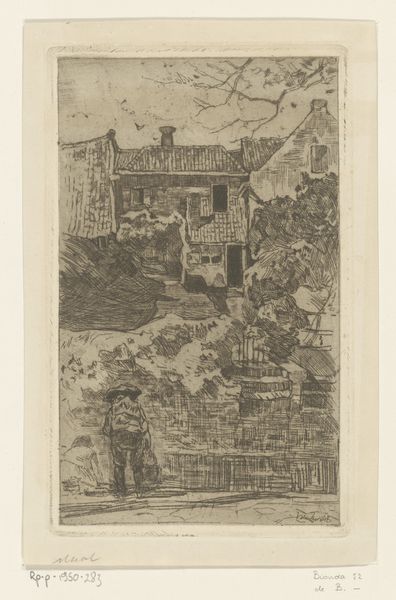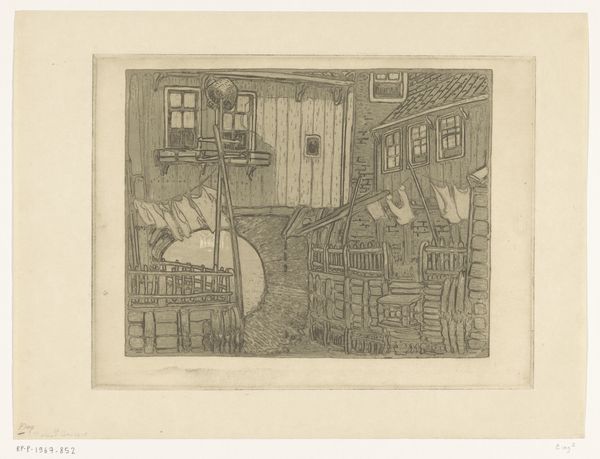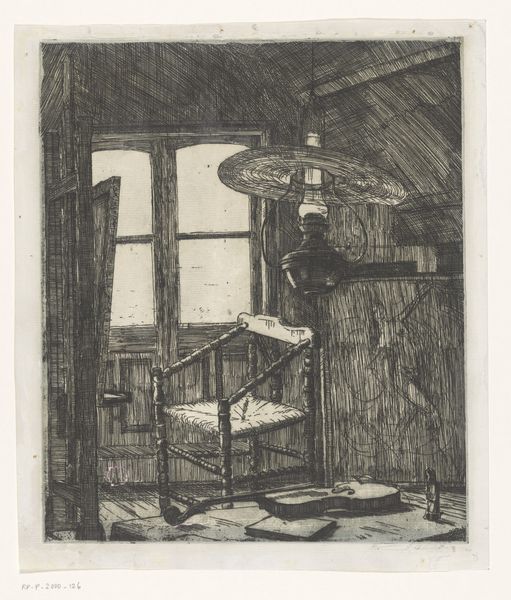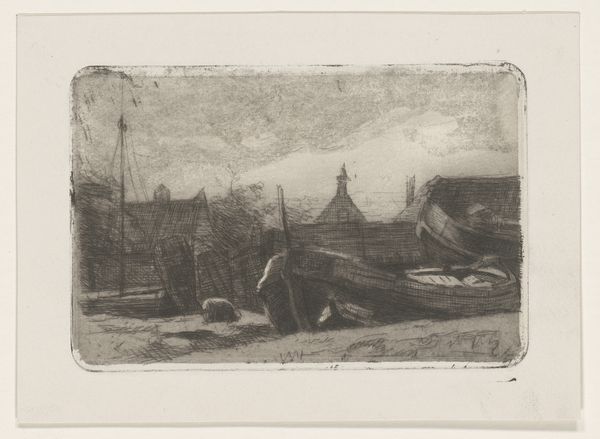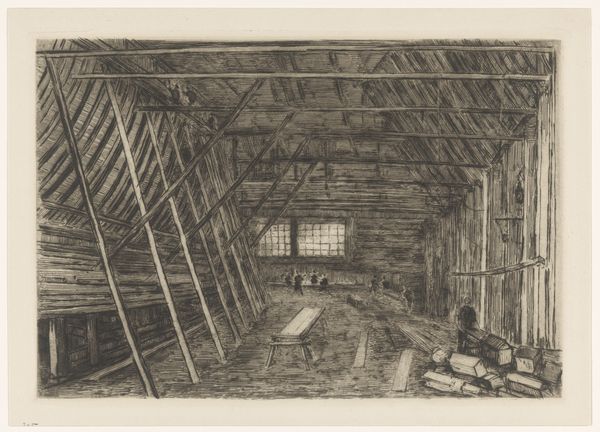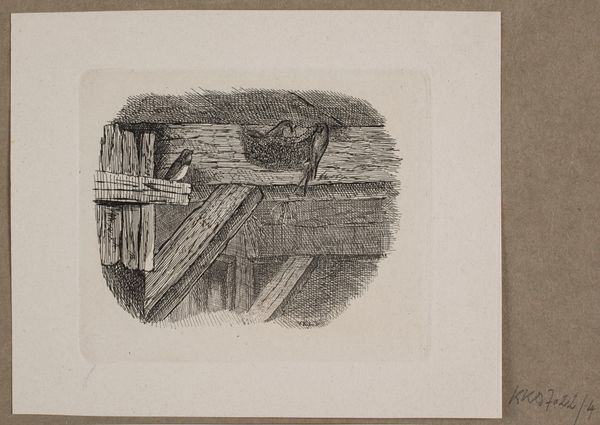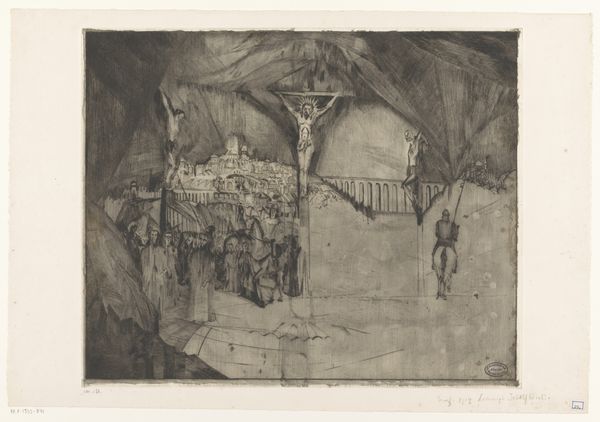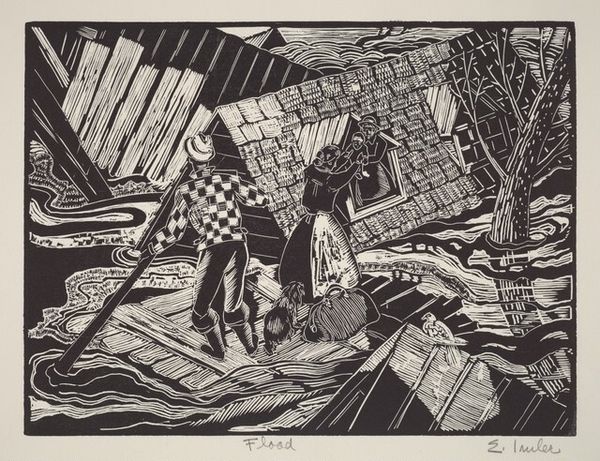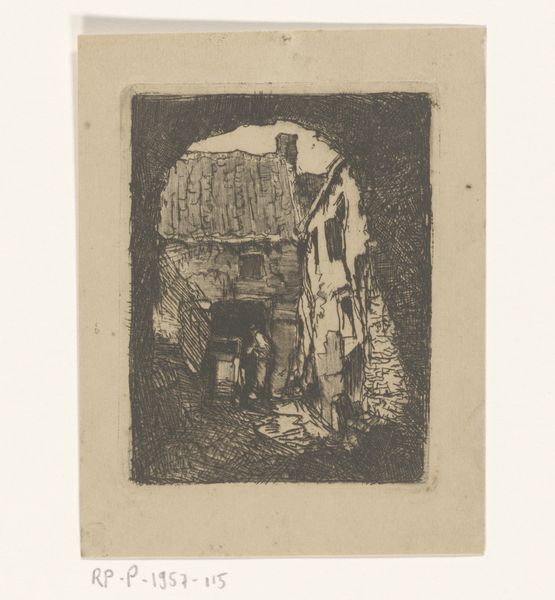
drawing, print, woodcut
#
drawing
#
pen drawing
# print
#
landscape
#
geometric
#
woodcut
#
line
Dimensions: height 188 mm, width 344 mm
Copyright: Rijks Museum: Open Domain
Editor: This is "Onderstuk van een korenmolen in Brugge," which translates to "Bottom part of a windmill in Bruges," made before 1909 by Wijnand Otto Jan Nieuwenkamp, likely a woodcut or a print of a pen drawing. It’s quite striking. I’m intrigued by the contrast between the dilapidated foreground structure and the orderly cityscape in the background. What do you see in this piece? Curator: Indeed. I observe that Nieuwenkamp has presented us with a careful orchestration of geometric forms. Consider how the artist uses the linear perspective of the rafters and the bridge to create a dialogue with the more fragmented planes of the stone ruins. Note how the texture shifts from the precise, detailed cityscape to the rough, almost chaotic foreground. This is where the semantic tension arises; a space which implies both decay and continuation, tradition, and nascent industry. The sunlight adds yet another structural layer. Editor: So, you’re saying the formal elements – lines, shapes, textures – are actually creating a sense of the passage of time and the transformation of the city itself? Curator: Precisely. Observe also how the choice of stark contrast reinforces this reading. Are we looking at progress, or decline? Or something more ambiguous, and less binary? Editor: It is really remarkable to observe the visual relationship between old and new this way. Thanks! Curator: My pleasure. The interplay of structure and chaos allows us to reflect on a given place, through a carefully wrought formalism.
Comments
No comments
Be the first to comment and join the conversation on the ultimate creative platform.
